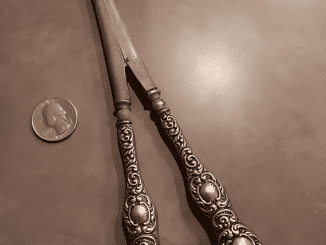Have you ever looked at a picture and felt something was just a little… off? Today, we bring you a fun and challenging puzzle that has left countless people scratching their heads. In the image below, you see a person feeding ducks by a lake – a serene and familiar scene. However, something is not quite right here. Can you spot what’s wrong?

At first glance, puzzles like these seem easy, right? But as you start searching for the tiny details, you may find yourself second-guessing everything you see. Our brains are wired to process familiar scenes quickly, sometimes skipping over inconsistencies. It’s why, in this image, your brain might focus on the person, the ducks, and the water, assuming everything fits naturally together.
Common mistakes in spotting differences come from two main cognitive biases:
- Pattern Recognition: Our brains love patterns. When we see a group of similar objects, we assume they are all alike. It’s why you might look at this group of birds and automatically think they’re all ducks.
- Familiarity: When a scene is familiar, like feeding ducks by a pond, we tend to overlook small anomalies. We’re conditioned to see what we expect, not what’s actually there.
Let’s break down the puzzle and guide you through a step-by-step analysis. Follow along and see if you can spot the odd detail!
Step 1: Focus on the Big Picture
Take a step back and look at the whole scene. Don’t zoom in on any part right now; instead, try to observe the whole scene. Here we have a person in a blue jacket feeding a flock of ducks. It looks like a peaceful lakeside scene, but something is wrong.
Step 2: Scan Each Element Individually
Now, start scanning each part of the image. Focus on the ducks in small groups rather than the whole scene at once. Examine the color, shape, and size of each duck. Is there anything different?
Tip: Pay close attention to the color. Ducks often have distinctive spots, so anything different can stand out as unusual.
Step 3: Analyze the Birds Closely
As you start to look more closely, you’ll notice that most ducks have a typical color scheme: green heads, brown bodies, and grays. But don’t stop at superficial observations. Look at the characteristics of each duck. Are there any ducks that have a different body shape or color than the others?
Step 4: Search for Unusual Details
After a careful scan, you may come across one that doesn’t look like a duck at all – a small pigeon trying to sneak in among the ducks. What’s more, it’s swimming in the water just like the ducks.

In the midst of all those ducks, there’s a sneaky little pigeon trying to blend in! That’s right, one bird in the picture doesn’t have a duck’s body shape or color; it has the more rounded, smaller shape of a pigeon. Located slightly left of the center, this sneaky pigeon is doing its best to join the crowd without being noticed. If you found it, congratulations! You have a sharp eye for detail.
This post encourages readers to take on the puzzle, offers a step-by-step breakdown, and reveals the solution in an engaging way. It also provides a broader perspective on why such puzzles are beneficial and invites readers to try more. Let me know if you’d like to add any specific points or have a different focus!


